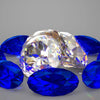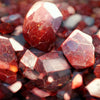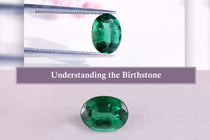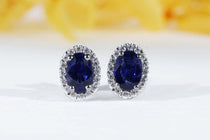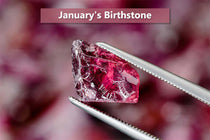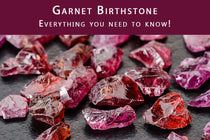Moissanite and morganite are both popular gemstones that offer unique qualities and characteristics. While moissanite is known for its remarkable brilliance and durability, morganite stands out for its captivating pink hue. Each gemstone has its distinct properties, making it essential to consider these differences when choosing between them.
Moissanite, a gem-quality laboratory-created silicon carbide, boasts a higher refractive index and luster than diamond, giving it an exceptional sparkle. It is also known for its durability and resistance to scratches, making it a popular choice for engagement rings and other jewelry pieces. To determine the authenticity of moissanite, it's crucial to know the key differences between real and fake moissanite, as well as how to spot them.
On the other hand, morganite is a naturally occurring pink variety of beryl, colored by manganese. Its pale pink hue has been increasingly popular in recent years, especially for engagement rings. This semi-precious gemstone offers a more subtle, romantic appearance compared to the brilliance of moissanite. Choosing between moissanite and morganite ultimately depends on individual preferences and the desired style for the jewelry piece in question.

History and Origin
Moissanite and morganite are two distinct gemstones with fascinating histories and origins. Moissanite was first discovered in 1893 by French chemist Henri Moissan in a meteorite that landed in Arizona. Initially, Moissan believed he had discovered diamond fragments, but later analysis revealed a new mineral composed of silicon carbide, which was eventually named in his honor.
Morganite, on the other hand, has a more terrestrial origin. It is a variety of the mineral beryl, just like emeralds and aquamarines, and primarily occurs in pegmatite deposits. The first significant find took place in Madagascar, with later discoveries reported in the United States and other countries. Morganite was named after the American financier and gem collector J.P. Morgan, who contributed significantly to the field of gemology.
While both moissanite and morganite share an illustrious history, their respective properties and appearance set them apart. Moissanite is renowned for its exceptional hardness, surpassing even sapphires and rubies, and sporting a brilliant sparkle similar to diamonds. Its durability and high refractive index make it an attractive option for jewelry, particularly for toi et moi rings that are gaining popularity for their timeless appeal.
Contrarily, morganite is beloved for its delicate pale pink to peach hues, with its color primarily attributed to the presence of manganese impurities. While not as hard or refractive as moissanite, morganite has a unique charm that has gained it a devoted following among gem enthusiasts. Its warm, romantic color palette has made it an increasingly popular choice for engagement rings and other sentimental jewelry pieces.
In conclusion, both moissanite and morganite have extraordinary origins and captivating histories that reflect their individual beauty and significance. Their distinct properties and applications in the world of jewelry make them sought after by gem collectors, aficionados, and casual wearers alike, each captivated by their unique allure.
Physical Properties
Moissanite is a lab-created gemstone made from silicon carbide that exhibits a high level of brilliance and fire. This gemstone is known for its durability and hardness, ranking at a 9.25 on the Mohs hardness scale. Moissanite is generally colorless, but it can also be found in fancy colors.
On the other hand, morganite is a member of the beryl family, which also includes emerald and aquamarine. This natural gemstone is made of beryllium aluminum silicate and is typically found in shades of pink to yellow. The pink color in morganite is attributed to the presence of manganese. Morganite has a hardness rating of 7.5 to 8 on the Mohs hardness scale, making it a durable and scratch-resistant option for jewelry.
Moissanite vs. Morganite: Physical Properties
| Property | Moissanite | Morganite |
|---|---|---|
| Composition | Silicon Carbide | Beryllium Aluminium Silicate |
| Hardness (Mohs) | 9.25 | 7.5–8 |
| Color Range | Typically colorless or near-colorless, may exhibit some yellow or green hues | Varied colors, commonly pink to peach, but can be other pastel shades |
| Refractive Index | 2.65–2.69 | 1.57–1.58 |
| Dispersion (Fire) | High | Low |
| Brilliance | Excellent, high sparkle and brilliance | Good, soft glow with lesser brilliance |
| Durability | Extremely durable, suitable for everyday wear | Moderately durable, may require more care and protection |
| Origin | Lab-created (moissanite) | Mined from natural deposits (morganite) |
| Cost | Generally more affordable compared to diamonds | Usually more affordable than many other gemstones, but cost varies with quality and size |
When comparing the clarity of moissanite and morganite, moissanite often has better clarity due to its lab-created nature, which usually results in fewer inclusions. However, morganite is also known for its good clarity and transparency. Both gems can be cut in various shapes and sizes, and they can be set in different jewelry designs, such as moissanite rings and morganite earrings.
In terms of composition, moissanite is a synthetic gemstone, while morganite is a natural semi-precious stone. While colorless moissanite can be an appealing alternative to diamonds due to its hardness, brilliance, and affordability, morganite is sought after for its beautiful and unique pink hue.
In conclusion, moissanite and morganite both have their distinctive features and appeal, each offering its own advantages in terms of physical properties. When choosing between these two gemstones, personal preference and desired aesthetic will play the determining role.
Uses and Applications
Moissanite and morganite are both popular gemstones used in various types of jewelry, including engagement rings. They offer unique characteristics that make them appealing diamond alternatives for those seeking a more budget-friendly option.
Moissanite is known for its remarkable brilliance and fire, which can even surpass that of a diamond. Its durability makes it an excellent choice for everyday wear, especially in engagement rings. Due to its affordability and ethical production, moissanite has gained popularity among celebrities and budget-conscious couples alike. Additionally, moissanite engagement rings are known for their long-lasting quality, making them a reliable choice for those looking to invest in a timeless piece.
On the other hand, morganite is a beautiful pink or peach-colored gemstone that adds a touch of elegance and femininity to any jewelry piece. This gemstone is known for its pleasant hues and unique inclusions that create a warm, romantic appearance. Morganite is often used in engagement rings for brides seeking a more distinctive look. It is also the birthstone for October, making it a popular choice for birthday gifts.
| Use/Application | Moissanite | Morganite |
|---|---|---|
| Jewelry | Popular as a diamond alternative in engagement rings and other fine jewelry | Used in various types of jewelry, especially in unique, delicate designs |
| Gemstone Collecting | Collected for its rarity and brilliance | Collectible for its unique colors and gemstone properties |
| Industrial Applications | Used in high-performance electronics and abrasives | Not commonly used in industrial applications |
| Healing and Spiritual Practices | Not traditionally used for healing or spiritual purposes | Believed by some to have healing and calming properties |
Both moissanite and morganite can be found in various cuts, and their versatility allows them to be set in a wide range of jewelry styles. These gemstones can be combined with different metals and additional gemstones to create stunning customized designs. For example, morganite may be paired with rose gold to accentuate its warm tones, while moissanite can be set in various ring styles that showcase its fiery brilliance.
In conclusion, moissanite and morganite both offer unique, affordable, and attractive alternatives to traditional diamond jewelry. Whether it's for an engagement ring, a special gift, or simply to add a touch of sparkle to your everyday attire, these gemstones provide a memorable statement with their captivating beauty and distinct characteristics. Choose the gemstone that best fits your personal style and preferences while considering the pros and cons of each option.

Care and Maintenance
Taking care of moissanite and morganite jewelry is crucial to ensure their longevity and maintain their beautiful appearance. Both stones are relatively durable, but they still require proper maintenance to prevent damage.
Moissanite is a durable gemstone, ranking 9.25 on the Mohs scale of hardness, which makes it resistant to scratches and daily wear. To maintain its sparkle, you can clean it by using a mild soap and warm water solution, and gently scrubbing with a soft toothbrush. Rinse the jewelry thoroughly and dry it with a soft, lint-free cloth. Regular cleaning can maintain the brilliance of your moissanite ring.
Morganite, on the other hand, has a slightly lower hardness level, ranking 7.5 to 8 on the Mohs scale. This means it is more prone to scratches and may not be as durable as moissanite. When handling morganite jewelry, it is essential to be cautious to avoid accidental dents or chipping. It is wise to remove morganite jewelry before doing any heavy physical activities like sports or gardening to prevent potential damage. Cleaning morganite jewelry is similar to moissanite, using a mild soap and warm water solution, and gently scrubbing with a soft toothbrush. Rinse and dry thoroughly to maintain its brilliance.
It is essential to store both moissanite and morganite jewelry separately from other gemstones to avoid any potential scratches or damages. You can use specialized jewelry boxes with separate compartments, fabric pouches, or soft-lined cases for this purpose.
Abrupt changes in temperature or exposure to harsh chemicals can damage both moissanite and morganite. Avoid wearing your jewelry while swimming in pools with chlorine or using household cleaning products that contain harsh chemicals. You can also consult a professional jeweler for periodic check-ups on your jewelry to ensure the integrity of the settings and inspect for any signs of damage.
In conclusion, following proper care and maintenance guidelines can preserve the beauty and longevity of both moissanite and morganite jewelry. Regular cleaning, careful handling, and storage are essential to maintaining their brilliance and protecting them from potential damage.
Price and Evaluation
When considering moissanite and morganite for jewelry, it is important to evaluate their prices, quality, and value in comparison to other gemstones like cubic zirconia. Moissanite is known for its affordability, which makes it a popular option for those seeking a diamond alternative. The cost of moissanite can vary depending on factors such as size, shape, and cut, but it is generally more affordable than morganite.
Morganite, on the other hand, is a naturally occurring gemstone that is prized for its unique pink and peach hues. Its price can be influenced by factors such as color intensity, clarity, and size. Although morganite is typically more expensive than moissanite, it has a distinct appeal for those who appreciate its delicate colors.
Quality plays a significant role when comparing moissanite and morganite. Moissanite is a synthetic gemstone, which means that its quality can be more consistently controlled during production. To ensure that a moissanite gem meets industry standards, it is crucial to obtain It from a reputable retailer and verify its authenticity and grading provided by a trusted certification entity. This helps to maintain confidence in your purchase and ensure that you are getting a gemstone of the highest possible quality.
| Aspect | Moissanite | Morganite |
|---|---|---|
| Price Range | Generally more affordable compared to diamonds | Usually more affordable than many other gemstones, but cost varies with quality and size |
| Evaluation Factors | Evaluated based on color, clarity, cut, and carat (4Cs), similar to diamonds | Evaluated based on color, clarity, cut, and carat (4Cs), with an emphasis on color and clarity |
| Value Retention | May retain value well due to its durability and diamond-like properties | Value retention can vary; higher-quality stones tend to retain value better |
Morganite, unlike moissanite, is a natural gemstone, so its quality can vary depending on the source and specific gem characteristics. It is essential to work with a reputable retailer who can provide information on the gem's origin, treatment, and overall quality.
In terms of value, both moissanite and morganite offer unique advantages. Moissanite's affordability and diamond-like appearance make it an attractive option for those seeking a budget-friendly yet stunning gemstone. Morganite's rarity and distinct colors can make it a valuable addition to a collection or an exquisite centerpiece for a piece of jewelry.
As you consider the options between moissanite and morganite, it is important to weigh factors such as price, quality, and value to make an informed decision that suits your needs and preferences.
Environment and Ethical Considerations
Moissanite and morganite are two distinct gemstones with unique environmental and ethical factors surrounding their sourcing and production. Moissanite, for instance, can be either lab-grown or naturally occurring. Lab-grown moissanite has gained popularity for its ethical and environmental benefits. Creating moissanite in a laboratory has a far lesser environmental impact than mining it, as it requires significantly less energy and resources. Furthermore, lab-grown moissanite is not associated with the ethical concerns of mining, such as labor issues, conflict financing, and ecosystem disruption.
On the other hand, morganite is primarily mined from the earth, which inherently raises some environmental and ethical concerns. Mining disrupts ecosystems and may cause habitat loss or pollution from waste runoff. To mitigate such issues, the gemstone industry is increasingly focusing on ethically sourced morganite, ensuring that the mining process adheres to strict environmental and social standards. This includes prioritizing the welfare of workers, limiting the ecological footprint of operations, and working to source materials responsibly in conflict-free zones.
Both moissanite and morganite are popular choices for consumers who are concerned about the environmental and ethical ramifications of their purchases. While lab-grown moissanite is considered a more eco-friendly choice due to its synthetic nature and controlled production environment, ethically sourced morganite is a strong contender for those seeking a naturally occurring gemstone with minimal negative impact. Ultimately, being well-informed about the origins and manufacturing processes of these gemstones is key to making a conscientious decision.
Frequently Asked Questions
How do moissanite and morganite compare in durability?
Moissanite is a very durable gemstone with a hardness of 9.25 on the Mohs scale, making it one of the hardest gemstones available behind diamonds, which have a hardness of 10. Morganite, on the other hand, has a lower hardness rating of 7.5 to 8 on the Mohs scale. Due to its hardness and durability, moissanite is less susceptible to scratches compared to morganite.
What is the price difference between moissanite and morganite?
Moissanite is generally more expensive than morganite, although both gemstones are less expensive than natural diamonds. The price difference between moissanite and morganite can be attributed to factors such as size, color, and quality of the gemstones.
Which is more popular for engagement rings: moissanite or morganite?
Both moissanite and morganite are popular choices for engagement rings due to their affordability and appeal as alternatives to natural diamonds. Moissanite is often chosen for its durability and brilliance, while morganite is desired for its delicate pink hue and vintage appeal.
How do the colors of moissanite and morganite differ?
Moissanite is typically colorless or near-colorless, closely resembling the appearance of a diamond. Morganite, in contrast, has a distinct pale pink to peach color. The choice between these two gemstones will depend on personal preference and the desired color for the engagement ring.
Do moissanite and morganite require similar care and maintenance?
Both moissanite and morganite are relatively low-maintenance and can be cleaned using mild soap and warm water. However, due to the lower hardness of morganite, it may require extra precautions to avoid scratches and damage. In general, both gemstones should be handled with care and removed during activities that may cause damage or exposure to harsh chemicals.
What factors should be considered when choosing between moissanite and morganite?
When deciding between moissanite and morganite for an engagement ring, factors to consider include personal preference, durability, brilliance, color, and price. Each gemstone has its own unique appeal, so it is important to choose the one that best aligns with the individual's style, lifestyle, and budget.
Checkout some of our top collections:


